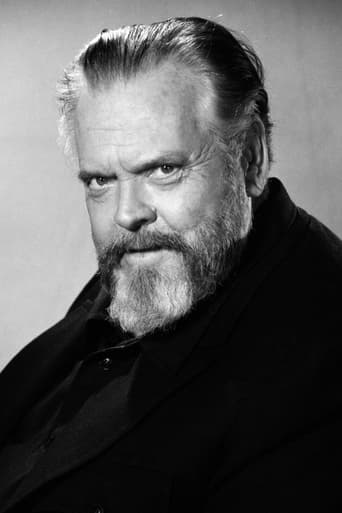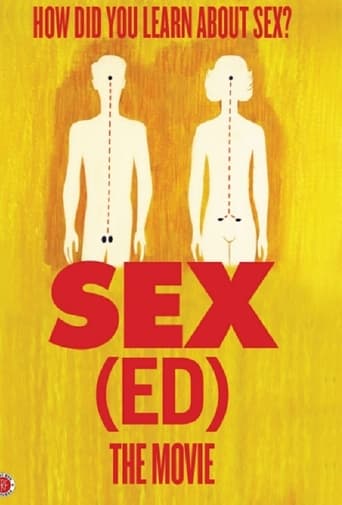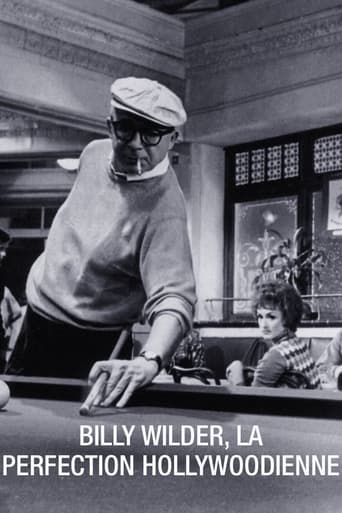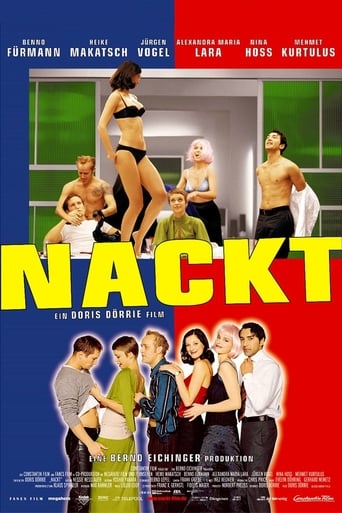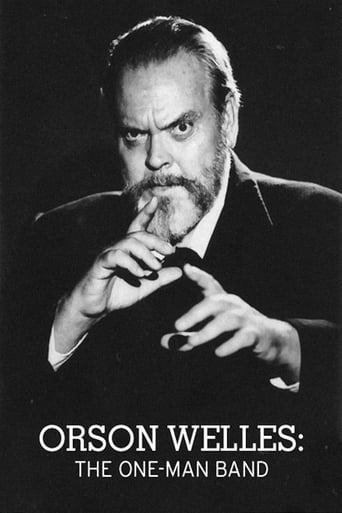
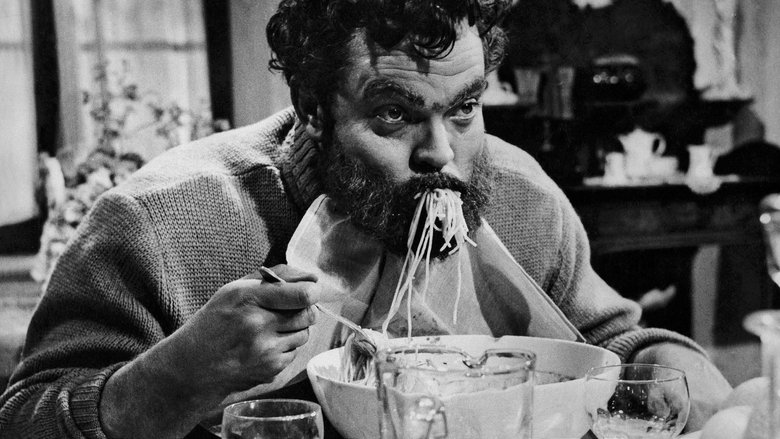
Orson Welles: The One-Man Band (1995)
Orson Welles' archives of unfinished/never released movies and the last years of his life from the perspective of Oja Kodar (life and artistic partner of Orson Welles in his last years).
Watch Trailer
Cast


Similar titles
Reviews
This is some clips of unfinished Orson Welles films along with some interview footage of him and his ex lover and some pretentious filler. This includes a fascinating scene from The Other Side of the Wind, some interesting bits from The Dreamers and The Deep, some Moby Dick monologues and some comedic nonsense that is like some weird old guy's home movies.Oja Kodar is engaging as she talks about her time with Orson, but she's apparently also been a major impediment to the finishing of The Other Side of the Wind, and one suspects that a lot of the intent of this film is to put Oja in front of the public, since she Welles was never able to make a star of her. (On the bright side, I think Netflix has managed to get the project of finishing the film going again; hopefully they'll finally do it!)While there are some terrific moments, the presentation is lacking and some of Welles' material is shockingly amateurish.
Gary Graver and Oja Kodar were Orson Welles' constant companions during the last years of his life. Graver was his photography director for American films and Kodar was his live in girlfriend. In One Man Band, the focus is usually on the films Oja performed in. The secondary message seems to be Oja wants fame and recognition because she was Welles' lover and wants to use him as a stepping stone to promote her own success. Shown is an extended promo for F for Fake where Oja is prancing about semi nude or in sexy clothes every minute of the ten minutes or so of the rejected trailer. The film in fact was a boring comparison of a famous art forger and Clifford Irving who faked Howard Hughes' biography. My main disappointment is that more of Welles' legendary unfinished film was not shown, The Other Side of the Wind. The scene shown is a short semi nude clip featuring Oja again. Gary Graver was said to have a complete working print of the movie, but his documentary featured little or nothing from it at all. A truckload of films are retrieved, but Oja claims to have just a few scenes. This is very hard for me to believe, indeed. A complete film from either Graver or Kadar kept separately from the negative stored in a vault in France seems to have vanished.
Orson Welles fans, this may be the best you'll get in terms of 'lock-box' finished films from the prolific, perpetually f***ed over father of maverick-style cinema (i.e. few films made in Hollywood, with Europe his only safe place for his very independent ways as an actor/writer/director/producer/editor). Like an author who's smaller, in-the-vault kinds of works put together by an editor into one compilation, One Man Band, like the documentary It's All True, is a sort of collector's item in and of itself. Along with giving the fullest possible glimpses (as far as we Welles fans know) of the films as part of Welles's un-official scrapbook, there are some revelatory insights from his longtime companion Oja Kodar, and clips from a public interview in an auditorium (a very funny one) that shines some light on a couple of issues. The director here is the editor, assembling the pieces at times in the essay style of F for Fake (and this film is now included with it on the brilliantly packaged Criterion DVD), though not as frantic in style and purpose.Here we get something very special, in spurts, and even when the interest is a little more low-key than expected (though fun, the novelty isn't exceptional of Welles reading excerpts from Moby Dick and The Merchant of Venice), one can't look away. The best parts include the intact scenes from the Deep, London, the filmed excerpts of Merchant of Venice, the little moments of Welles's odd, hilarious imitations, and the one that still could be completed, the Other Side of the Wind. That last film is maybe the most fascinating film of the lot, as it goes even further with montage and experimental style than F for Fake. It's wild, it's rambling, and I could only get an idea of what was going on, but that's all I could've asked for anyway. The veneer of Welles's personality, as well, is stripped a bit away through Kodar's insights, how he was more of a modest man than the overwhelming, megalomaniac personality people made him out to be. At the end of the day he was, as the film makes clear without a shadow of doubt, one of the true poets of 20th century cinema, and like other controversial artists his major works were practically all censored, while the minor works barely left his traveling-alongside film cans.To see a filmmaker at work, at least in retrospective, can be many things, from dull, to over-indulgent, to really passing all of that and showing a man at work. While there isn't footage of Welles at work on a set like with Ingmar Bergman Makes a Movie or A.K., the footage here compensates for that. One can see through the little bits of film done, the ones that showed his determination to keep rolling along instead of getting stuck in the past, that it isn't too much of a surprise that he got a little sick of people tipping the hat to Citizen Kane and nothing else he did in his career. His story is one of the tragedies of the artist's world, though it's good to know that he never got too depressed to not quit at the magic and voices. It's a real treat.
A hugely enjoyable look at the films that were never completed by Hollywood's infant terrible, Orson Welles - while he was appearing in second-rate films (or taking tiny cameos in good films) he was chasing his dreams of making films like Moby Dick, The Merchant of Venice, and others.Here we see clips of what is left and see how the failed projects developed, grew, and ran out of money. We also see surprisingly funny stuff such as the One-Man Band segment, alongside more serious stuff like The Other Side of the Wind.As well as his lost work, this film gives an opportunity to bring sundry TV appearances together - Orson with the Muppets, doing magic tricks and recitations, and so on.



